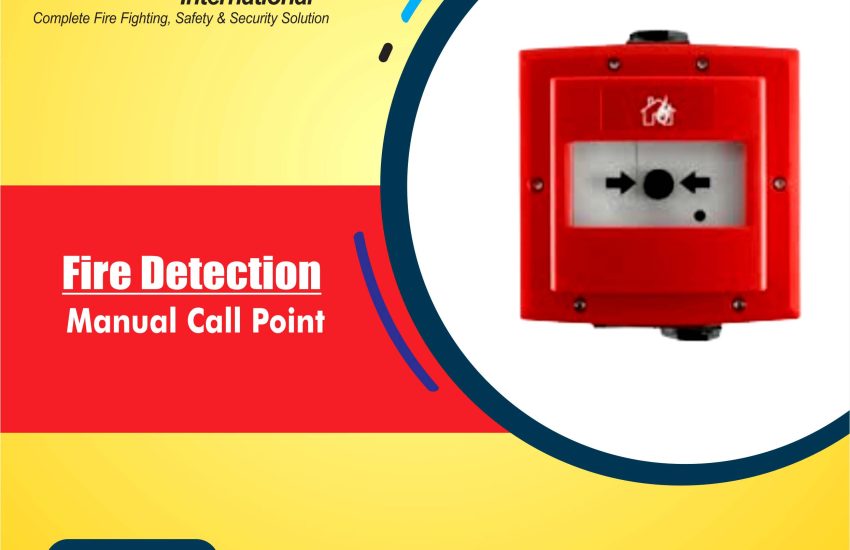Manual Call Point Uses (MCP) is an essential device in fire safety and emergency systems. It enables individuals to manually trigger fire alarms during emergencies. This guide will explore the uses of manual call points, their key features, and why they are crucial for fire safety.
What is a Manual Call Point?
Manual Call Point Uses (also known as a manual alarm call point, MCP switch, or fire alarm call point) is a device designed to activate fire alarm systems manually. Installed in accessible locations, it allows anyone to quickly trigger the alarm by pressing a button or breaking a glass panel. This alerts everyone in the building and emergency services to a fire or emergency.
How Do Manual Call Points Work?
Manual call points are simple yet vital devices in fire alarm systems. Here’s how they function:
- Activation: The user either presses a button or breaks a glass panel to activate the manual call point. This sends a signal to the fire alarm control panel.
- Signal Transmission: The activated signal triggers visual and audible alarms, warning everyone in the building.
- Emergency Response: Once the alarm goes off, occupants can evacuate the building while emergency services respond promptly.
Key Uses of Manual Call Points
Manual call points are critical in fire safety and emergency situations. Here are some of their primary uses:
1. Fire Safety Activation
Manual call points allow people to manually trigger the fire alarm in the event of a fire. If automatic detection fails or isn’t available, individuals can still activate the alarm.
2. Initiating Evacuation Procedures
When activated, the manual call point signals an emergency, prompting the building’s evacuation procedures. Early activation helps reduce panic and ensures people evacuate quickly and safely.
3. Emergency Alerts in High-Risk Areas
In industrial areas, warehouses, and factories, manual call points provide a fast means to alert people to a potential fire or other emergency, especially in environments lacking automatic detection systems.
4. Activation in Remote or Hard-to-Reach Areas
Sometimes, manual call points are placed in locations that are hard to access with automatic sensors, such as large or open areas. They ensure that alarms can still be triggered even in difficult-to-reach spaces.
5. Additional Fire Safety in Commercial and Residential Spaces
In offices, hotels, and homes, manual call points act as an additional layer of protection. They allow people to activate alarms when automatic detection systems are unavailable or malfunctioning.
6. Fire Drills and Emergency Training
Manual call points are useful for fire drills and training exercises. They help people practice responding quickly to fire alarms, ensuring they know how to act in real emergencies.
Features of Manual Call Points
Manual call points are designed to be highly effective and easy to use. Here are their key features:
- Simple Activation: The call point features a button or glass panel that anyone can quickly use to trigger the alarm.
- Weatherproof Design: Many manual call points are designed to withstand outdoor or harsh environments, ensuring their reliability in all conditions.
- Tamper-Proof: These devices often include tamper-resistant features to prevent accidental activation or vandalism.
- Clear Signage: They are typically marked with visible signs like “Fire Alarm” to help users easily locate them during an emergency.
- Durable Construction: Manual call points are made from strong materials, ensuring they resist damage from everyday use or environmental conditions.
- Compatibility with Fire Alarm Systems: They integrate seamlessly with both wired and wireless fire alarm systems, ensuring reliable performance.
Benefits of Manual Call Points
Manual call points offer numerous benefits for fire safety systems. Here are a few advantages:
- Quick Activation: They provide a fast way to activate fire alarms, ensuring timely alerts in case of emergencies.
- User-Friendly: The simple design makes manual call points easy for anyone to use, even in high-pressure situations.
- Cost-Effective: Manual call points are affordable compared to other fire detection systems, making them an economical choice for many properties.
- Reliable Backup: In case of power failure or system malfunction, manual call points serve as a reliable backup for activating alarms.
- Enhanced Safety in Large Buildings: In large commercial buildings or schools, manual call points ensure alarms are triggered promptly, even in complex layouts.
- Compliance with Safety Regulations: Many fire safety regulations require the installation of manual call points. By including them, you ensure your building complies with local laws.
Installing Manual Call Point
Proper installation is key to the effectiveness of manual call points. Here are some tips for ensuring proper setup:
- Strategic Placement: Install call points in easily accessible areas like hallways, exits, and stairwells. These locations ensure quick access during emergencies.
- Height Considerations: Ensure call points are positioned at a reachable height for everyone, including children and people with disabilities.
- Avoid Obstructions: Do not place manual call points behind obstacles that could block access or visibility.
- Regular Testing and Maintenance: Regularly inspect and test the devices to ensure they remain in good working condition. Promptly replace any faulty units.
Conclusion
Manual Call Point Uses are a critical component in fire safety systems, offering a reliable way to activate alarms during emergencies. They provide fast, accessible fire detection and help ensure the safety of building occupants. From industrial spaces to residential homes, manual call points improve fire safety by offering a simple yet effective means of triggering alarms. By understanding their uses and ensuring proper installation, you can enhance the overall emergency preparedness of any property.


